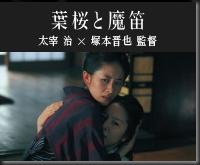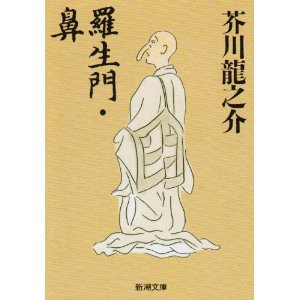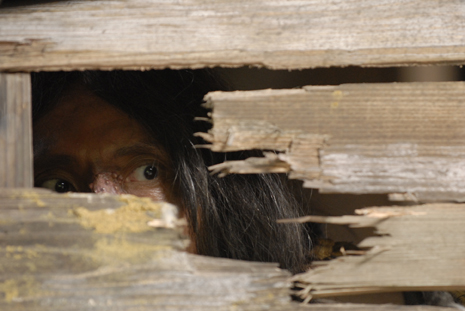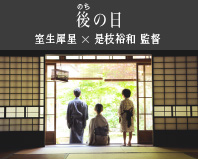Kaidan Horror Classics [妖しき文豪怪談]
![Kaidan Horror Classics [妖しき文豪怪談]](imageresize.php?file=usercontent/f93008050c4b9035f63b21cd75a21259.jpg&opts=w250h500)
The Whistler [葉桜と魔笛], directed by Shinya Tsukamoto
The Nose [鼻], directed by Sang-il Lee
The Days After [後の日], directed by Hirokazu Kore-eda
Shown as part of The Japan Foundation Touring Film Programme – ‘Once Upon a Time In Japan’ Reinventing the Past Through the Eyes of Japanese Contemporary Filmmakers
Screening at the Tyneside Cinema, Newcastle Upon Tyne
10th March 2013, 3.30pm
Running Time: 121 minutes, Language: Japanese with English Subtitles
Review by Lucy Searles
This year, to mark its tenth anniversary, The Japan Foundation Touring Film Programme is showing a huge range of films by contemporary Japanese filmmakers that all fit within the genre of “jidai geki” (period dramas -時代劇). These are films that cast a nostalgic eye back on previous eras or events through a variety of genres and mediums in an attempt to give a broad and vibrant picture of Japan’s past. In keeping with this idea is the set of three films the ‘Kaidan Horror Classics.’ All three of the films are based on famous literary tales or the works of well-respected Japanese authors, giving the films a wonderfully unique vision – modern reinventions of classic tales. While the classification of the films as ‘horror’ is perhaps misleading, all three films feature a link to the spiritual, religious and the supernatural with very little of the features that many would associate with modern Japanese horror films.
The first film shown is “The Whistler” based on the story The Cherry Tree and The Whistler [葉桜と魔笛] by Dazai Osamu [太宰 治] published in 1939. The film, adapted by director Shinya Tsukamoto [塚本晋也] and starring Aoba Kawai [河井青葉], is about Yuko who spends her time looking after her terminally ill younger sister. Upon discovering mysterious letters addressed to her sister Yuko sets out to discover the identity of the sender. The film mixes haunting visions with beautiful scenery and frantic music, building up a tension throughout the film and with a few genuinely terrifying moments, it works well. While it may have been the weakest of the three, particularly in terms of cinematography the film is still an interesting examination of family life and relationships in Showa era Japan.
The second film shown is perhaps the most moving of the three, “The Nose” [鼻] is based on the story of the same name by Akutagawa Ryunosuke [芥川 龍之介], who wrote many stories based on Japanese folklore and Buddhist tales. Directed by Sang-il Lee [李相日] and starring Yutaka Matsushige [松重豊] as a Buddhist monk named Zenichi, who attempts to save a child from the river only to push the child away when he sees the monstrous nose the monk had been hiding.
The film follows the guilt raked monk and his growing paranoia and fear as well as the villagers who live around him. With beautifully shot images of the lush green countryside and the dark shadowy huts of the village the film does not shy away from depicting the squalor and poverty of medieval, rural Japan. The film stands out from the other two, not only because of the medieval time setting which is in contrast to the Showa period films that frame it, but also because the film questions what it is to be ‘normal’ and examines alienation and self consciousness – a message that transcends time periods and can affect everyone.
The final film shown in the collection is the graceful “The Days After” [後の日 also sometimes translated as “Latter Days”] that is adapted from a number of fantasy stories from the writer Murou Saisei [室生 犀星] and directed by Hirokazu Kore-eda [是枝裕和]. The films centers around a young couple that have lost their child, only for him to appear in front of them once again. Is it a reincarnation or a ghost? The film centers on the peaceful days of the reunited family and the fathers efforts to work out where the child has come from. The film is beautifully filmed, with spectacular sequences that perfectly capture the feelings of loss that are explored in the film. A particularly beautiful scene is the moment in which the father tries to seek out where this child has come from, running over a bridge in the twilight and stopping a man with a light to ask if he has seen the child. The whole scene is shot entirely in the reflection of the water, in nothing but shadows, the light from the lamp glowing in the ripples.
While all three films are very different, they do all share a similar vision of the past. The spirituality and mysticism in all three films create a feeling of the past as another world far removed from modern life while showing that the same feelings of loss, loneliness and alienation are the same no matter when they are felt or how the situations change.
Once Upon A Time is showing films at a range of venues across the UK from 1st Feb – 27th March 2013.

